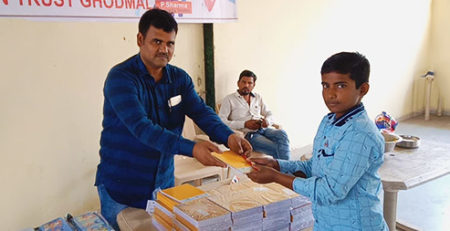Empowering Tribal Communities in Maharashtra: A Journey of Hope and Transformation
Satya2025-01-08T01:28:33-05:30Tribal communities in Maharashtra, India, have long been marginalized and faced discrimination. They have limited access to education, healthcare, and employment opportunities. As a result, they are often trapped in a cycle of poverty and deprivation.
Challenges faced by the tribal communities in Maharashtra
- Poverty: Tribal communities are among the poorest in Maharashtra. According to the 2011 census, the poverty rate among tribal communities in Maharashtra was 47%, compared to the state average of 25%.
- Illiteracy: The literacy rate among tribal communities in Maharashtra is low. According to the 2011 census, the literacy rate among tribal communities in Maharashtra was 53%, compared to the state average of 77%.
- Unemployment: The unemployment rate among tribal communities in Maharashtra is high. According to the 2011 census, the unemployment rate among tribal communities in Maharashtra was 11%, compared to the state average of 6%.
Initiatives taken by the government to empower tribal communities in Maharashtra
The government of Maharashtra has taken a number of initiatives to empower tribal communities in the state. These initiatives include:
- The Tribal Sub-Plan (TSP): The TSP is a centrally-sponsored scheme that aims to ensure that a certain percentage of the government budget is allocated to the development of tribal communities.
- The Scheduled Tribes and Other Backward Classes (Reservation) Act, 1993: This act provides for reservation in education and employment for tribal communities.
- The Forest Rights Act, 2006: This act recognizes the rights of tribal communities to their traditional forest lands.
The government’s initiatives have had a positive impact on the lives of tribal communities in Maharashtra. For example, the TSP has led to an increase in the allocation of funds for tribal development. The Scheduled Tribes and Other Backward Classes (Reservation) Act, 1993 has led to an increase in the representation of tribal communities in education and employment. The Forest Rights Act, 2006 has empowered tribal communities to manage their traditional forest lands.
Challenges that remain
Despite the progress that has been made, there are still many challenges that remain. For example, the quality of education and healthcare services in tribal areas is often poor. There is also a lack of awareness among tribal communities about their rights.
The way forward
The way forward is to continue to invest in the development of tribal communities. This includes investing in education, healthcare, and infrastructure. It is also important to raise awareness among tribal communities about their rights.
Conclusion
The empowerment of tribal communities in Maharashtra is a journey of hope and transformation. The government has taken a number of initiatives to empower tribal communities, and these initiatives have had a positive impact on the lives of tribal people. However, there are still many challenges that remain. The way forward is to continue to invest in the development of tribal communities and to raise awareness among tribal communities about their rights.
Stories of hope
There are many stories of hope and transformation from tribal communities in Maharashtra. For example, one tribal community in the state has set up a collective farming enterprise that has helped to improve the livelihoods of its members. Another tribal community has set up a school that is providing education to children from the community. These are just a few examples of the many ways in which tribal communities in Maharashtra are working to improve their lives.
The future of tribal communities in Maharashtra
The future of tribal communities in Maharashtra is bright. The government is committed to empowering tribal communities, and there is a growing movement among tribal communities to assert their rights. With continued investment and support, tribal communities in Maharashtra can achieve their full potential.
I hope this blog has been informative. Please let me know if you have any questions.
In addition to the information in the blog, I would also like to add that the following are some of the key factors that have contributed to the empowerment of tribal communities in Maharashtra:
- The growth of the self-help group (SHG) movement: SHGs have empowered tribal women by providing them with access to credit and training.
- The rise of tribal entrepreneurs: There has been a growing number of tribal entrepreneurs in Maharashtra who are starting their own businesses.
- The increasing political participation of tribal communities: Tribal communities are increasingly participating in the political process and are demanding a voice in the decisions that affect their lives.
I believe that these factors will continue to play a role in the empowerment of tribal communities in Maharashtra in the years to come.






Leave a Reply